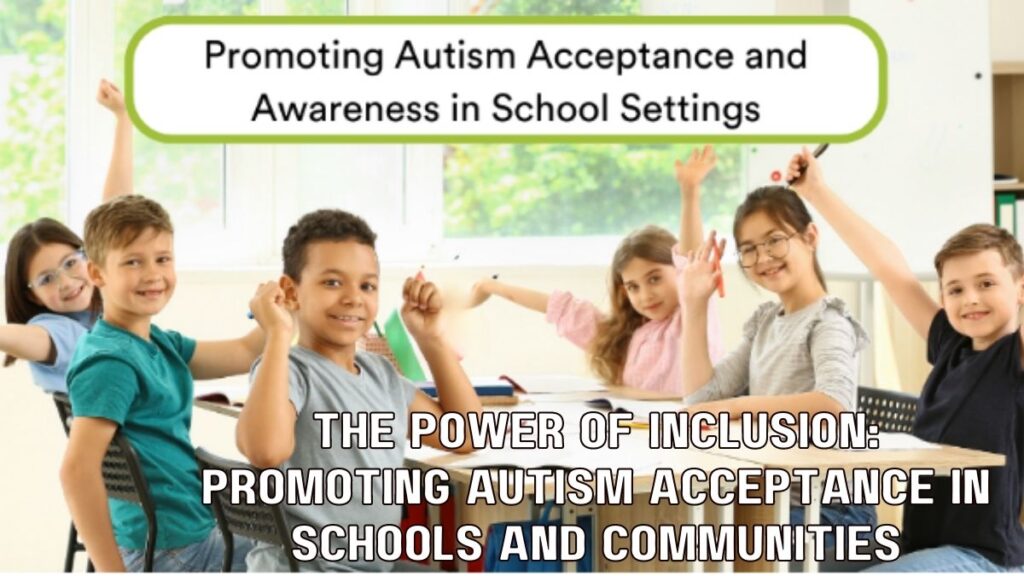Introduction:
Autism Spectrum Disorder (ASD) affects millions of individuals worldwide, and fostering acceptance and inclusion for people on the autism spectrum is crucial. By creating inclusive environments in schools and communities, we can empower individuals with autism to thrive, reach their full potential, and contribute meaningfully to society. In this blog post, we will explore the power of inclusion and discuss strategies to promote autism acceptance in schools and communities.
1. Understanding Autism Spectrum Disorder:
a. Defining Autism Spectrum Disorder: Autism Spectrum Disorder is a neurodevelopmental condition characterized by differences in social communication, behavior, and sensory processing.
b. The Autism Spectrum: Autism is a spectrum, and each individual’s experience with autism is unique. Understanding and embracing neurodiversity are key to promoting acceptance.

2. Importance of Autism Acceptance and Inclusion:
a. Creating a Supportive Environment: Acceptance and inclusion contribute to the well-being and mental health of individuals with autism, fostering a sense of belonging and reducing feelings of isolation.
b. Unlocking Potential: Inclusive environments provide opportunities for individuals with autism to showcase their strengths, talents, and unique perspectives, benefiting both the individual and the community.
c. Building Empathy and Understanding: Inclusion helps foster empathy, understanding, and appreciation for diversity among peers, educators, and community members.

3. Promoting Autism Acceptance in Schools:
a. Educational Awareness: Educating school staff, students, and parents about autism helps dispel myths, reduce stigma, and promote a culture of acceptance and support.
b. Inclusive Education Practices: Implementing inclusive education practices, such as Individualized Education Plans (IEPs), tailored support, and accommodations, enables students with autism to access quality education in mainstream classrooms.
c. Social Skills Development: Providing social skills training and opportunities for peer interactions can enhance social competence and foster positive relationships among students with autism and their peers.
4. Cultivating Autism Acceptance in Communities:
a. Community Engagement and Education: Organizing workshops, seminars, and community events on autism awareness and acceptance helps increase understanding and acceptance in the wider community.
b. Collaboration with Local Organizations: Collaborating with local autism organizations and support groups can provide resources, guidance, and advocacy for individuals with autism and their families.
c. Promoting Employment Opportunities: Encouraging inclusive employment practices and creating job opportunities for individuals with autism promotes their independence, self-esteem, and integration into the workforce.
5. Embracing Universal Design and Accessibility:
a. Physical Accessibility: Ensuring physical accessibility in public spaces, schools, and community centers enables individuals with autism to participate fully in activities and events.
b. Communication and Sensory Accessibility: Providing communication supports, sensory-friendly environments, and visual supports accommodates the unique needs of individuals with autism.
Conclusion: The Power of Inclusion and Autism Acceptance
Promoting autism acceptance and inclusion in schools and communities is a powerful way to create a more compassionate and understanding society. By fostering inclusive environments, embracing diversity, and providing support and resources, we can empower individuals with autism to lead fulfilling lives and contribute their talents to the world. Let us work together to create a future where autism acceptance is the norm, celebrating the strengths and unique perspectives of all individuals, and building a more inclusive and accepting world for everyone.

